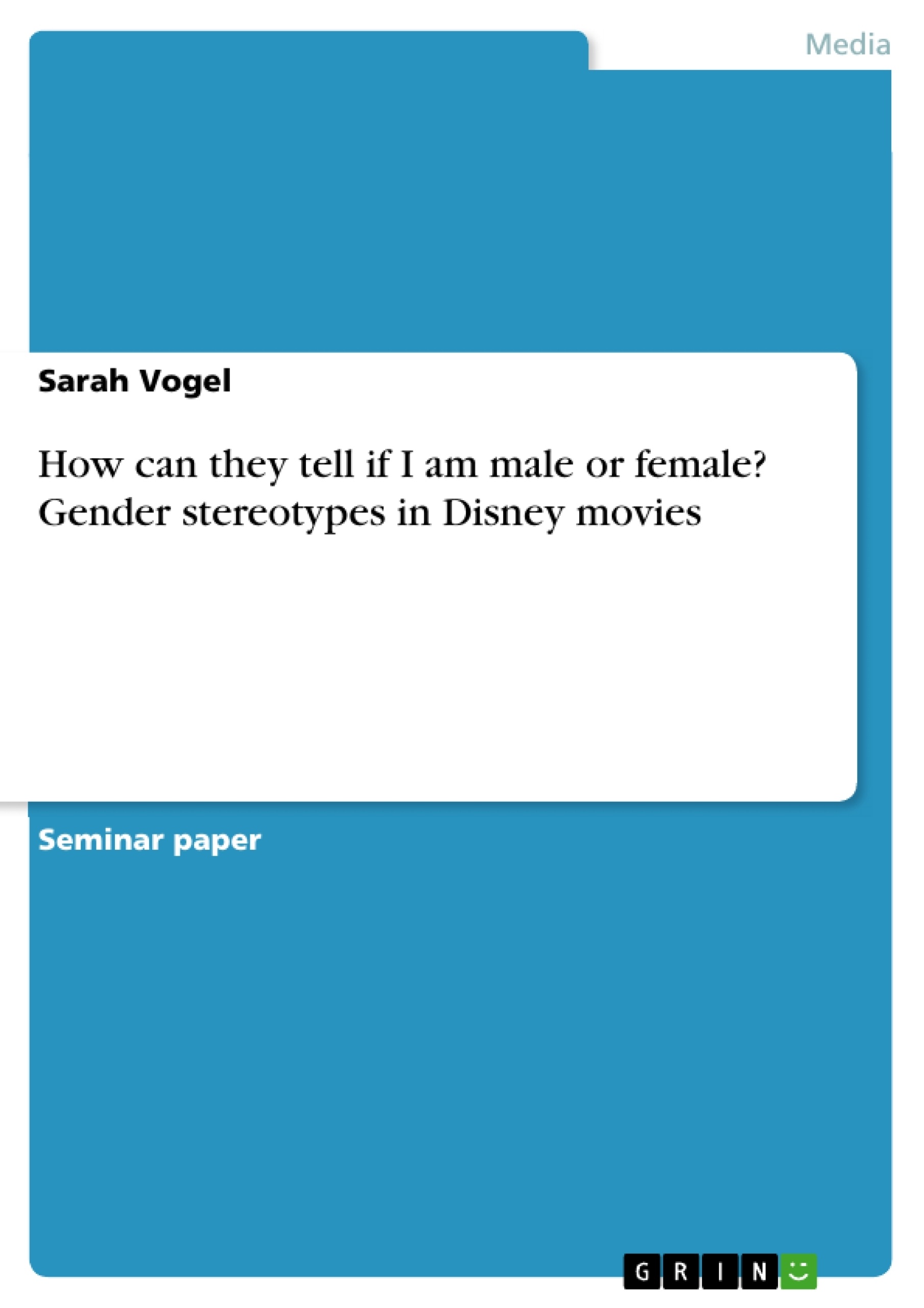If we look behind the “sparkling stars” and “memorizing magic” that is Disney, we might see that these Disney princesses are not the best role models for children. Therefore, this research paper aims at showing these role models in Disney movies and give an awareness of problems they bring with them.
“How can they tell if I am male or female?” This last line of The Ballad of Mulan shows that the gender question was already raised in the 6th century. This research aims at analyzing the representation of females in Walt Disney movies: the appearance and intelligence, helplessness and the need of protection and domestication. Before doing so, there has to be a definition what gender role is, in general, but also in Disney movies.
Table of Contents
- Introduction.
- Gender Roles
- Walt Disney and the Walt Disney Company..
- Disney Princesses.
- Snow White........
- Appearance and Intelligence .......
- Helplessness and Need of Protection.
- Cinderella.
- Snow White........
- Change of Disney stereotypes?
- Disney Princesses.
- Conclusion
- Bibliography.....
Objectives and Key Themes
This research paper aims to analyze the portrayal of female gender stereotypes in Walt Disney movies, focusing specifically on the appearance and intelligence, helplessness and need for protection, and domestication of Disney princesses. The paper seeks to raise awareness of the potential problems associated with these stereotypes, demonstrating how they can negatively influence young viewers.
- Analysis of female gender stereotypes in Disney movies.
- Examination of how these stereotypes are presented through the characters of Disney princesses.
- Exploration of the potential negative impacts of these stereotypes on young viewers.
- Discussion of the historical context of these stereotypes and their evolution over time.
- Evaluation of the role of Disney in shaping gender perceptions.
Chapter Summaries
- Introduction: This chapter sets the stage for the research paper, discussing the prevalence of gender stereotypes in Disney movies and the need to analyze their potential impact on young viewers. It also provides a brief historical context for the discussion, acknowledging the long-standing debate about gender roles in society.
- Gender Roles: This chapter explores the concept of gender roles, defining them in general terms and then applying these definitions to the context of Disney movies. It highlights the potential influence of Disney on shaping perceptions of gender and the debate that has arisen between feminists and the Walt Disney Corporation over the years.
- Walt Disney and the Walt Disney Company: This chapter introduces the Walt Disney Company as a major media force and examines its influence on children's entertainment, particularly through the use of music and romance in its princess movies. It also emphasizes the importance of family relationships in Disney films and the potential impact of Walt Disney's personal beliefs on the company's representation of women.
- Disney Princesses: This chapter delves into the characteristics of Disney princesses, analyzing how they embody specific themes related to women's appearance, helplessness, and domestication. It sets the stage for a more in-depth analysis of specific princesses, such as Snow White and Cinderella.
- Snow White: This chapter provides a brief introduction to the character of Snow White, highlighting her appearance and the ways in which she embodies the stereotypical Disney princess image.
Keywords
This research paper explores key concepts related to gender roles, stereotypes, and the representation of women in mainstream media, particularly within the context of Disney animated films. Specifically, it focuses on examining themes of appearance, intelligence, helplessness, domestication, and their impact on young viewers' perceptions of gender. The analysis draws upon insights from feminist scholarship and critical studies of Disney's cultural influence.
- Arbeit zitieren
- Sarah Vogel (Autor:in), 2015, How can they tell if I am male or female? Gender stereotypes in Disney movies, München, GRIN Verlag, https://www.grin.com/document/337857




